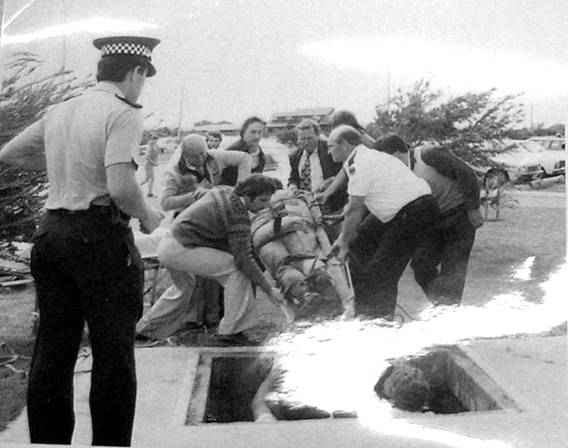
South Australian Medical Heritage Society Inc
Website for the Virtual Museum
Home
Coming meetings
Past meetings
About the Society
Main Galleries
Medicine
Surgery
Anaesthesia
X-rays
Hospitals,other organisations
Individuals of note
Small Galleries
Ethnic medicine
- Aboriginal
- Chinese
- Mediterran
St. John Ambulance splints
The St. John Ambulance Museum in Arthur St. Unley S.A. has an unique collection of first aid splints dating to the 19 th. century. The numerous examples dating from the 18th century to recent times (1960) were kindly provided to be photographed by Dr. Brian Fotheringham, the curator of the St. John’s Ambulance Museum .
The first photographs show a wooden box containing numerous splints used in the 19 th. century (1888) to immobilise traumatised limbs: They are made of metal with perforations to provide air and drainage access, and there are sizes to accommodate various ages. The “Allen Key” like pieces were used to provide angulation. The splints are labelled “radial, tibial maxillary, and humeral. Their size can be judged by comparison with the box which is 15.5 inches long.
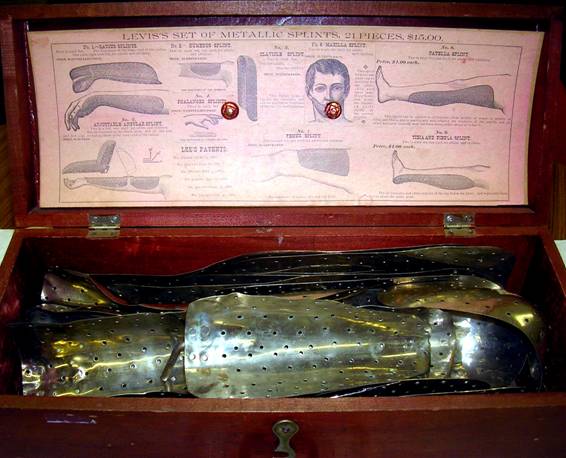
Wooden box set of metal limb and maxillary splints © 1888
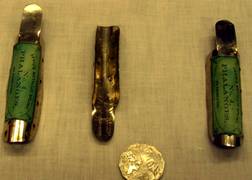
Radius splints
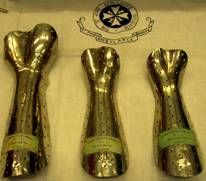
Finger splints
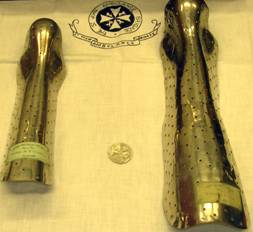
Patella splints
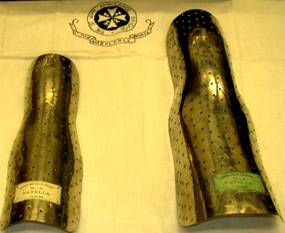
Tibia & fibula splints
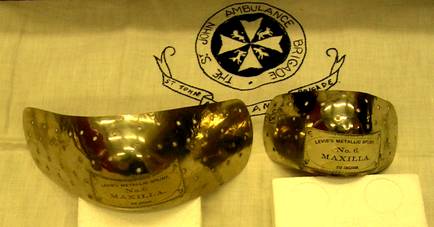
Maxillary splints
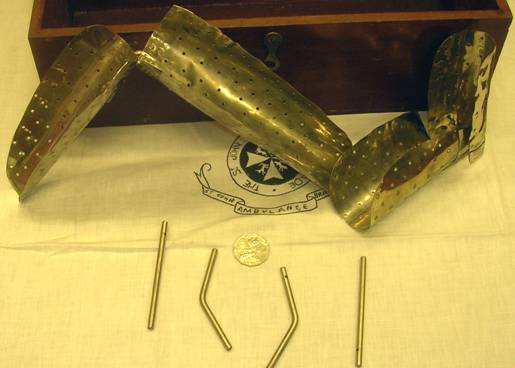
Adjustable Splints with “Allan” keys
These are probably of similar age, possibly during W.W.1 The round holes fit the malleoli and the calico straps used to fasten them to the limb are held by leather straps. Again the object was to stabilise the fractures. The splints are for the forearm and lower limbs. Some have metal joints to allow joint movement. The St. John logo is 5.5 inches wide.
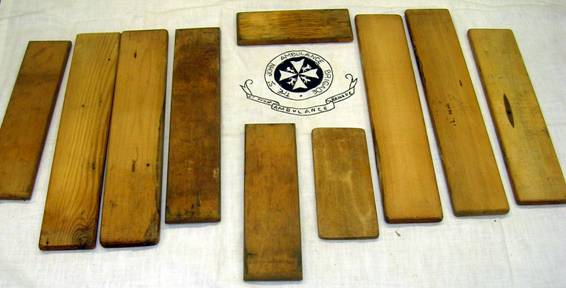
St. John’s Ambulance flat wood limb splints
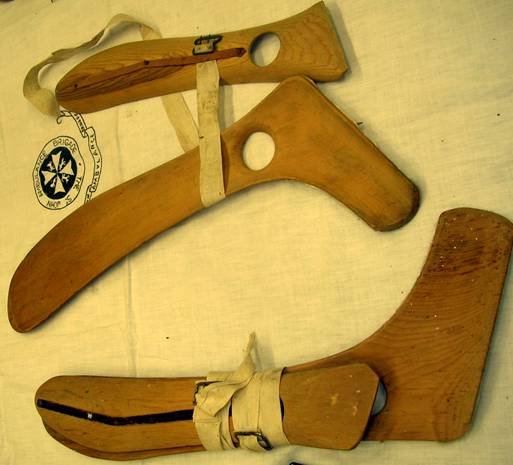
Wood splints with calico straps. Note holes for malleoli
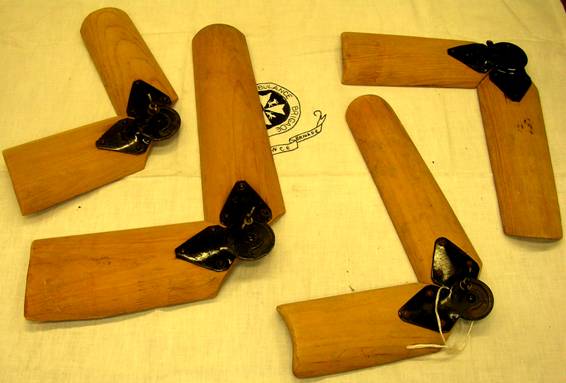
Hinged wooden splints
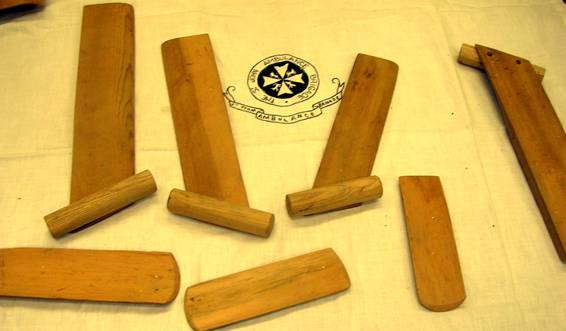
Wrist & hand splints
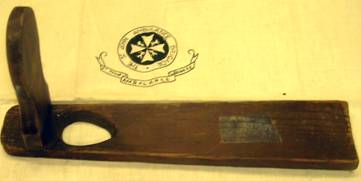
Leg & foot splint
Thomas splint
The following, are 2 types of portable Thomas Splint, The older model is enclosed in a wooden box, and has a wheel and ratchet to provide traction. The later model is stored in a green plastic container. Both can be adjusted for length.
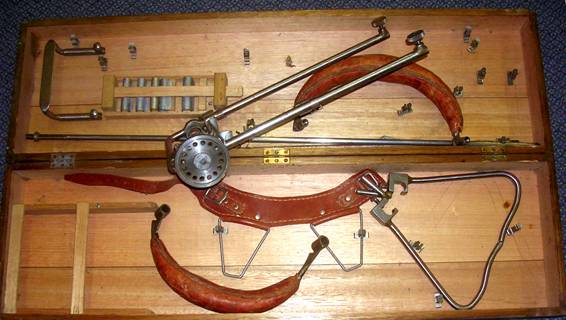
Box containing components for assembly of an adjustable Thomas splint
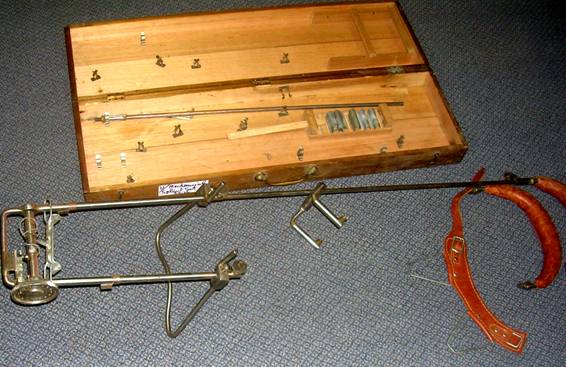
Thomas splint partially assembled
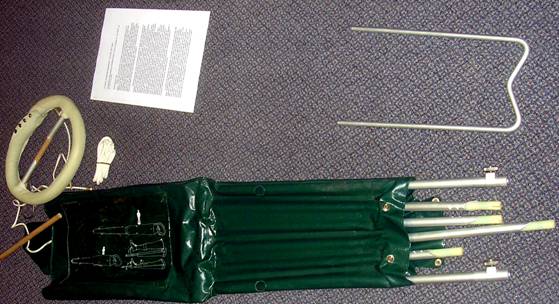
More modern portable Thomas splint
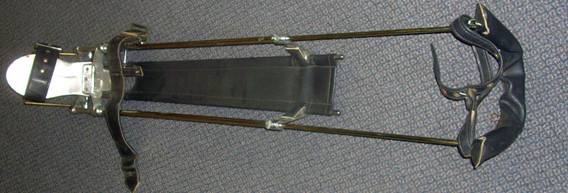
This leg splint has a component to prevent foot drop, and a space to avoid pressure on the heel.

An extendable splint for immobilisation of the leg during transport
Calico & Wooden Slats Splint
To follow are 2 views of a splint used to immobilise the leg. The wide belt fits around the waist while the lower square portion is wrapped around the lower limb to immobilise it.
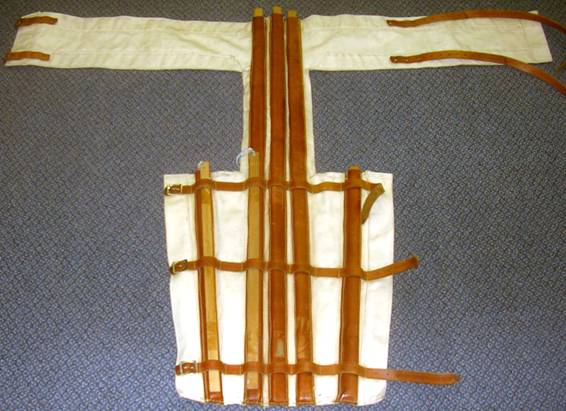
Calico & slat splint for leg fractures
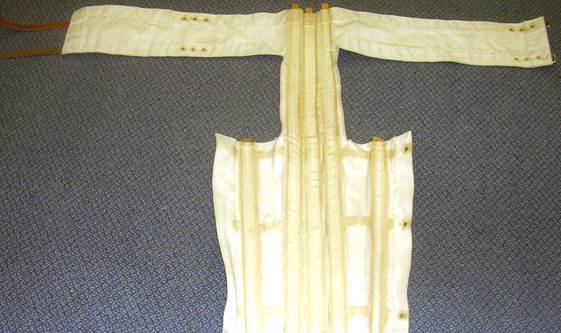
Calico & Slat Splint
- Inside View
Pneumatic Splints
These were used for fractured limb immobilisation, and as the label on the container implies were carried by motor-cycle patrols. It is not clear as to how the patient was transferred to hospital.
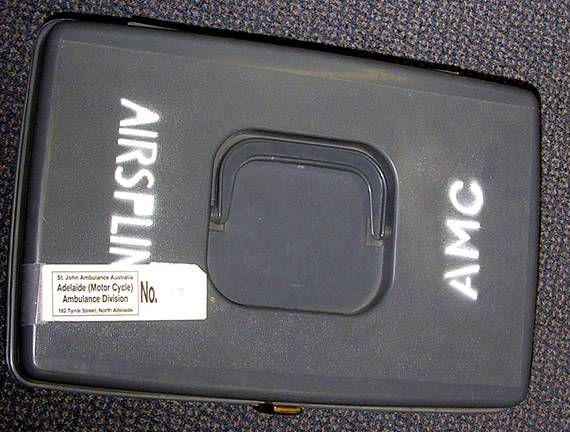
“Air Splints” container, Label reads “ Adelaide (Motor Cycle) Ambulance Division”
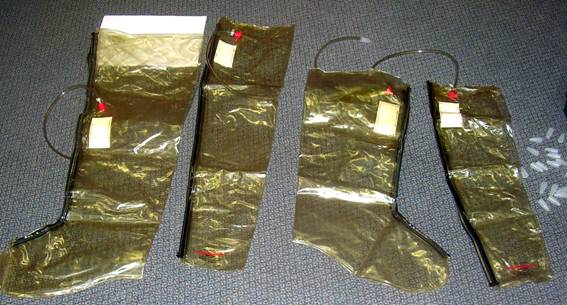
Air splints. Note inflation tubes and stoppers.
Cervical Collars
These collars have 3 creases marked by arrows, which when folded can produce three different widths to fit the patient.
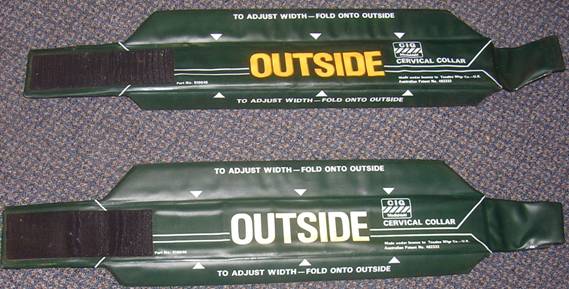
Cervical Collars
Note arrows showing folds for adjustment
Malleable Wire (Zimmer) Splints
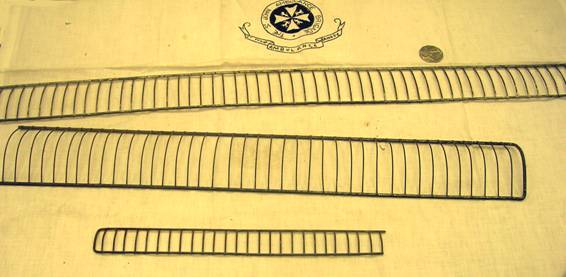
Malleable adjustable wire splints used for temporary immobilisation of fractures
Special Whole Body Rescue Stretcher

.
Archival press photograph of a rescue involving the above stretcher
.
-o0o-
